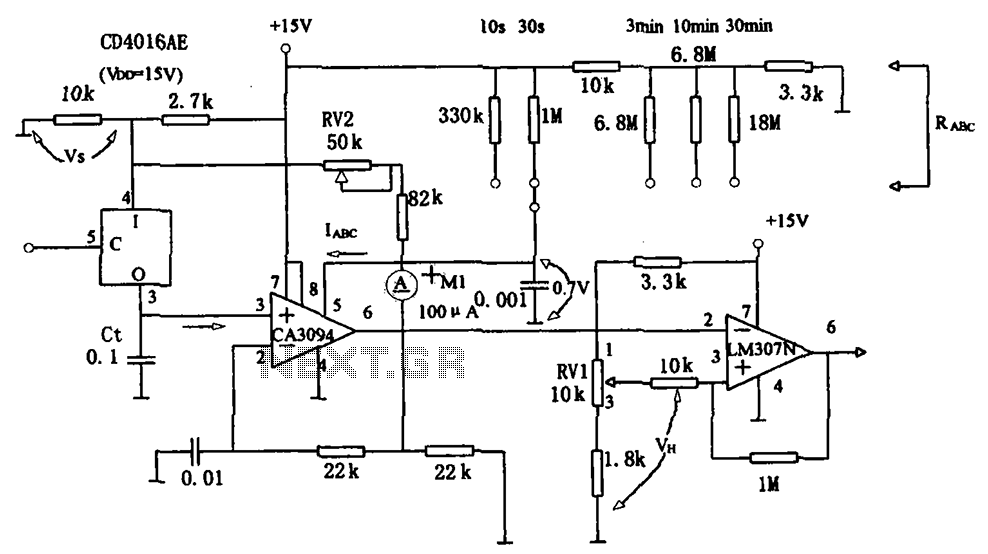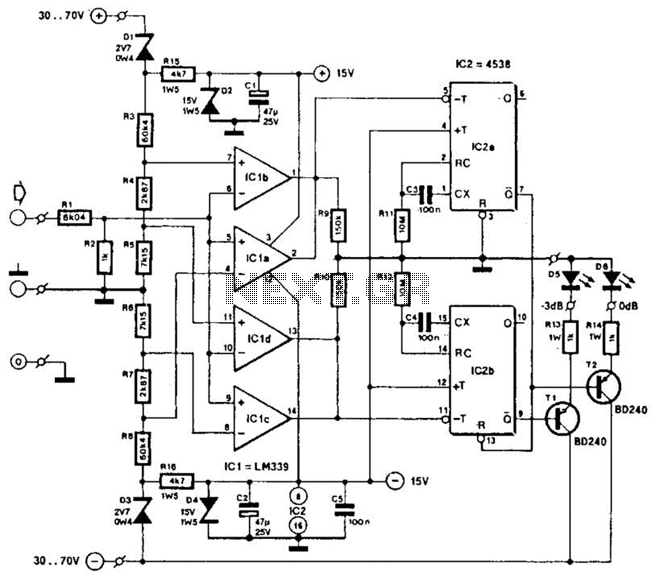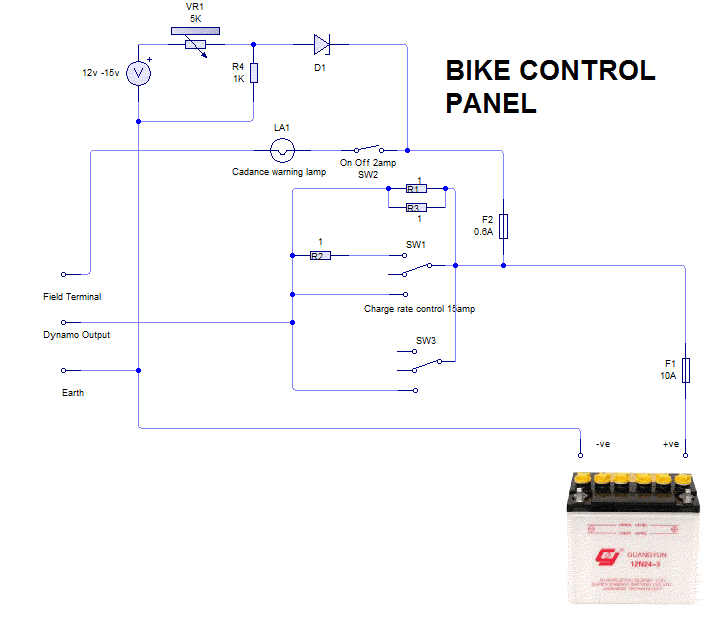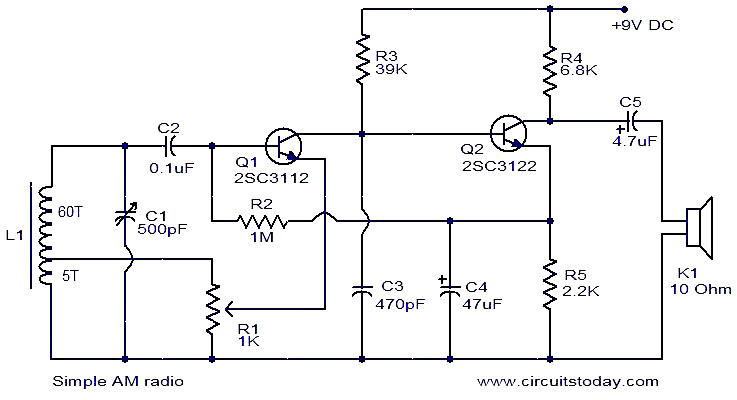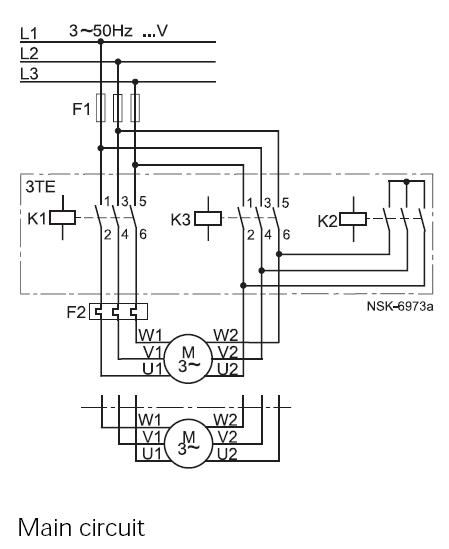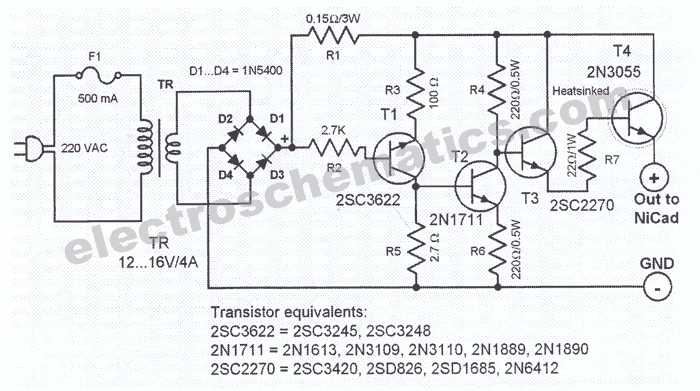
FM Radio Receiver Circuit
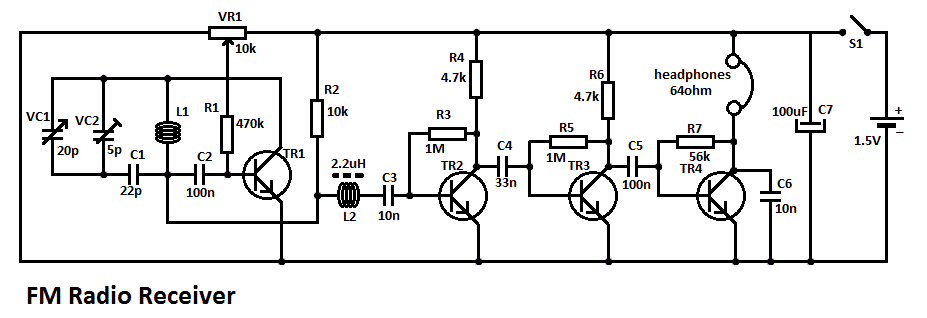
This simple FM radio receiver circuit consists of a regenerative RF stage, TR1, followed by a two or three-stage audio amplifier comprising TR2 to TR4. In some areas...
This circuit is designed to receive FM radio signals, utilizing a regenerative RF stage for signal amplification and selection. The regenerative stage, implemented with transistor TR1, enhances the sensitivity and selectivity of the receiver. The circuit operates by feeding a portion of the output signal back to the input, which increases the gain and enables the reception of weaker signals.
Following the RF stage, the audio signal is processed through a multi-stage audio amplifier. The configuration can be either a two-stage or three-stage amplifier, utilizing transistors TR2, TR3, and TR4. Each stage is responsible for further amplifying the audio signal derived from the RF stage, ensuring that the output is suitable for driving speakers or headphones.
The circuit may include passive components such as resistors and capacitors, which are essential for biasing the transistors, filtering, and coupling between stages. The design also typically incorporates an antenna input for capturing the FM signals and may feature a tuning mechanism to adjust the circuit for different frequencies.
Overall, this FM radio receiver circuit is a straightforward yet effective design for amateur radio enthusiasts and serves as an excellent educational project for understanding the principles of radio frequency and audio amplification.This simple fm radio receiver circuit consists of a regenerative rf stage, TR1, followed by a two of three-stage audio amplifier, TR2 to TR4. In some areas.. 🔗 External reference
This circuit is designed to receive FM radio signals, utilizing a regenerative RF stage for signal amplification and selection. The regenerative stage, implemented with transistor TR1, enhances the sensitivity and selectivity of the receiver. The circuit operates by feeding a portion of the output signal back to the input, which increases the gain and enables the reception of weaker signals.
Following the RF stage, the audio signal is processed through a multi-stage audio amplifier. The configuration can be either a two-stage or three-stage amplifier, utilizing transistors TR2, TR3, and TR4. Each stage is responsible for further amplifying the audio signal derived from the RF stage, ensuring that the output is suitable for driving speakers or headphones.
The circuit may include passive components such as resistors and capacitors, which are essential for biasing the transistors, filtering, and coupling between stages. The design also typically incorporates an antenna input for capturing the FM signals and may feature a tuning mechanism to adjust the circuit for different frequencies.
Overall, this FM radio receiver circuit is a straightforward yet effective design for amateur radio enthusiasts and serves as an excellent educational project for understanding the principles of radio frequency and audio amplification.This simple fm radio receiver circuit consists of a regenerative rf stage, TR1, followed by a two of three-stage audio amplifier, TR2 to TR4. In some areas.. 🔗 External reference
Warning: include(partials/cookie-banner.php): Failed to open stream: Permission denied in /var/www/html/nextgr/view-circuit.php on line 713
Warning: include(): Failed opening 'partials/cookie-banner.php' for inclusion (include_path='.:/usr/share/php') in /var/www/html/nextgr/view-circuit.php on line 713
